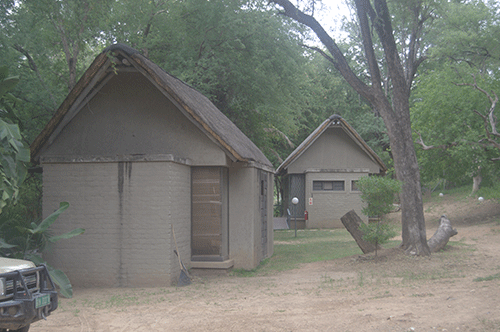Albertina Nakale
Aron Mushaukwa
KATIMA MULILO – Whether it is the Kongola crocodile farm, Liselo/Katima Mulilo green scheme or the Zambezi Waterfront Tourism Park, government agencies are to be blamed for the region’s dormant or abandoned projects.
This is the view of Zambezi governor Lawrence Sampofu, who put the blame squarely on delays in the payment of contractors as a major contributor to project abandonment.
“Delays by ministries in paying contractors have led to contractors abandoning sites, hence delaying completing projects on time,” the governor stated while delivering his penultimate state of the region address (Sora) last week.
While highlighting the challenges experienced during the 2022/2023 financial year, Sampofu pointed out that budgetary constraints have contributed to site abandonments and delays to complete various capital projects.
The projects which have been left in limbo include the abovementioned, as well as teachers’ houses at some schools, home affairs’ offices in Katima Mulilo and the ZWTP on the banks of the Zambezi River.
Regarding the waterfront where government has been in negotiations with the Namibia Wildlife Resorts (NWR) to take over the operations, Sampofu hinted that such discussions have hit a rocky stone, and that other parties have submitted proposals to revive and manage the waterfront.
“NWR is hesitating. We don’t know what is really happening. I understand the Katima Mulilo Town Council also wants to come in to run the waterfront. I likewise received a letter from a company belonging to a certain Dr Haufiku – they also want to run the waterfront as a joint venture, either with the ministry or with the town council. This will come out later,” he stated.
Other challenges highlighted by the governor include resistance from community members to pave the way for development in areas proclaimed as settlements, particularly Lusese and Sibbinda, as well as “land disputes due to undefined traditional authority boundaries”.
Questions
Katima Mulilo Urban constituency councillor Kennedy Simasiku had more questions for Sampofu on the day.
He asked about the legitimacy of having a single board member overseeing the entire affairs of the now-defunct multi-million-dollar ZWTP.
While the government is said to have spent N$189 million to establish the tourism facility, N$57 million reportedly vanished into thin air.
Lately, the bone of contention has been that the facility is being run by a sole director, Regina Ndopu-Lubinda.
Simasiku expressed disappointment that the government can allow a situation where a public institution vested with public funds can be run by a single board member.
“It is unheard of in corporate governance. It must be addressed as a matter of urgency. I request the honourable governor’s office to assist in ensuring that the interim board is appointed so that we can run the process of finding possible investors to develop the facility.
I personally spearheaded efforts to ensure the board of directors of the waterfront is appointed on an interim basis, until such a time that the facility is fully operational. Last year August, I attended a meeting in Okahandja, where the issue of the interim board was discussed. But nothing has happened thus far,” the youthful Simasiku said.
Eyesore
A quick look at the facility today reveals a sorry state.
Despite the government having pumped in millions of dollars over the years, the transfer of the park to the NWR has failed to materialise.
After spending N$189 million on its construction, a further N$51 million is needed to revive the ZWTP, which has not been operational for nearly seven years.
Last month, the Ministry of Finance and Public Enterprises gave an update on the project.
The ministry said: “We are at an advanced stage to facilitate the transfer of the Zambezi Waterfront to the best fit of a State entity to run it. The media will be kept abreast of developments.”
“In 2020, the ministry [of tourism] approached NWR with a proposal for taking over the Zambezi Waterfront, and NWR conducted an assessment that estimated a renovation cost of N$51 million,” Wilson Shikoto, the finance and public enterprises ministry’s spokesperson was quoted as saying.
Ndopu-Lubinda refused to comment on the matter, despite questions having been sent to her since February by this publication.
Mistake
Back in 2020, tourism minister Pohamba Shifeta admitted that the government gravely erred when it pumped millions into a project it had no capacity to run.
Kalimbeza’s cry
On the same day, Sampofu lamented the Zambezi’s underutilised agricultural potential.
Chiefly, he said despite the region’s vast land for crop production and animal grazing, there are no green schemes here.
This is despite the four traditional authorities (Mafwe, Masubia, Mayeyi and Mashi) having given land for agricultural projects.
Sampofu was disappointed that the multi-million-dollar Kalimbeza rice project is at minimal production.
It was envisaged to become the major rice producer, contributing towards food security in Namibia, but has over the years yielded little to poor rice harvests.
“There is nothing happening there. This rice project is supposed to be a very big thing,” Sampofu continued.
Year in, year out, the government, through the agriculture ministry, continues to bail out the rice project with millions of dollars to save it from the brink of collapse.
This resulted in the farm not having planted rice for the past two years due to factors such as disconnected electricity, non-payment of employees’ salaries, a lack of fuel, uneven fields and wrecked equipment.


